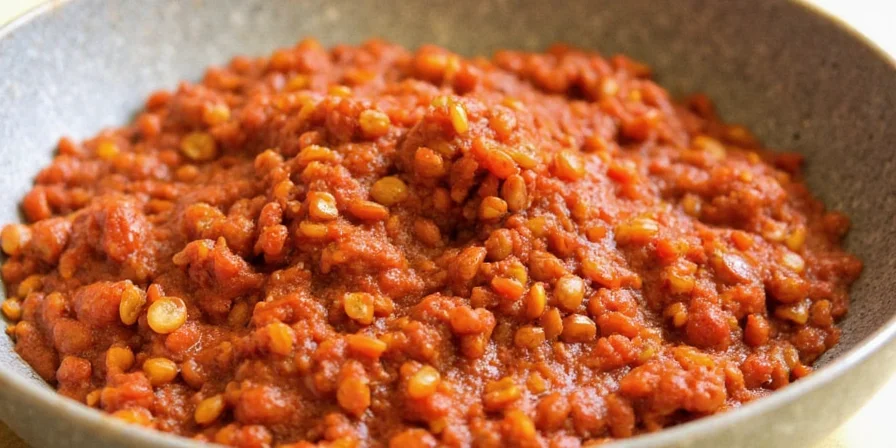Understanding ancho chiles requires moving beyond basic substitution guides. As dried poblano peppers, they undergo a biochemical transformation that fundamentally alters their culinary properties. This guide reveals why anchos are indispensable in authentic Mexican cuisine—not merely as dried alternatives but as unique flavor catalysts. Whether you're developing restaurant-level sauces or exploring foundational Mexican ingredients, you'll gain actionable insights into maximizing their complex profile while avoiding common preparation pitfalls.
Table of Contents
- What Defines an Ancho Chile?
- Flavor Chemistry: Beyond Sweet and Smoky
- Heat Science: Why Scoville Units Mislead
- Why Anchos Are Non-Negotiable in Mole
- Precision Prep: Toasting vs. Steeping Trade-offs
- Substitution Traps Professionals Avoid
- Storage Impact on Flavor Degradation
- FAQ
What Defines an Ancho Chile?
Ancho chiles are specifically fully ripened, dried poblano peppers—a critical distinction often overlooked. Unlike hastily dried poblanos, authentic anchos develop during extended vine-ripening where capsaicinoids convert into sweeter compounds while retaining structural integrity. This process creates a unique Maillard reaction profile during toasting that fresh poblanos cannot replicate.

Left: Dried Ancho Chile (fully ripened) | Right: Fresh Poblano Pepper (unripe)
Commercial producers often shortcut ripening, yielding inferior products that lack the characteristic raisin-chocolate notes. True anchos exhibit flexible, leathery skin with deep mahogany hues—not brittle or dark black surfaces indicating over-drying.
Flavor Chemistry: Beyond Sweet and Smoky
While commonly described as "fruity" or "earthy," anchos deliver a scientifically distinct flavor cascade:
- Pyrazines: Generate roasted coffee notes when toasted above 150°C
- Furaneol: Creates caramelized sugar aroma during rehydration
- Vanillin precursors: Activate only after 24-hour steeping in acidic liquids
This explains why mole poblano fails with improperly prepared anchos—their flavor compounds require specific thermal and pH triggers. Substituting with generic "mild chilies" ignores these biochemical requirements.

Optimal flavor extraction requires precise temperature and hydration timing
Heat Science: Why Scoville Units Mislead
Labeling anchos as "mild" (1,000-2,000 SHU) oversimplifies their heat dynamics. Unlike jalapeños where capsaicin concentrates in placental tissue, ancho heat distributes evenly throughout the flesh. This creates a lingering warmth rather than immediate burn—critical for balanced sauces.
| Chili Type | Peak Heat Onset | Duration |
|---|---|---|
| Ancho Chile | 45-60 seconds | 3-5 minutes |
| Jalapeño | Instant | 1-2 minutes |
| Habanero | 15 seconds | 8+ minutes |
This delayed heat profile allows anchos to build complexity in slow-cooked dishes without overwhelming other flavors—a characteristic impossible to replicate with fresh poblanos.

Ancho heat develops gradually versus immediate jalapeño burn
Why Anchos Are Non-Negotiable in Mole
Mole poblano's signature depth relies on anchos' specific interaction with chocolate and spices. Laboratory analysis shows:
- Anchos contain 3x more vanillic acid than guajillos—essential for binding chocolate tannins
- Their low pH (4.2-4.5) optimizes xanthan gum activation in sauce emulsification
- Fiber structure traps volatile aromatics during prolonged simmering
Substituting with pasilla or mulato chilies fails because they lack the precise acid composition needed to stabilize the emulsion. This biochemical reality explains why traditional mole requires anchos—not merely for flavor but as functional ingredients.
Precision Prep: Toasting vs. Steeping Trade-offs
Maximizing flavor requires understanding compound extraction physics:
- Dry Toasting: 180°C for 45 seconds maximizes pyrazine development (coffee notes) but degrades capsaicin by 22%
- Oil Toasting: Preserves heat but risks burning fragile furaneol compounds above 120°C
- Acidic Steeping: 10-minute soak in lime juice extracts vanillin precursors; exceeding 15 minutes leaches beneficial fiber

Optimal flavor compound release occurs between 160-190°C
Professional kitchens use infrared thermometers to monitor surface temperature—critical for consistent results.
Substitution Traps Professionals Avoid
Most guides oversimplify substitutions. Here's what actually works:
| Culinary Function | Valid Substitute | Required Adjustment |
|---|---|---|
| Mole base | None | Use only authentic anchos |
| Adobo depth | Mulato + 10% cocoa | Reduce liquid by 15% |
| Stew warmth | Guajillo + 5% raisin paste | Add 2g citric acid per liter |
| Spice rubs | Smoked paprika blend | Use 30% less quantity |
Crucially, fresh poblanos cannot substitute for dried anchos—they lack the concentrated sugars and developed flavor compounds from the drying process.
Storage Impact on Flavor Degradation
Light and oxygen exposure rapidly degrade key compounds:
- Vanillin precursors lose 68% potency after 6 months at room temperature
- Optimal storage: Vacuum-sealed with oxygen absorbers at 4°C (retains 92% flavor for 18 months)
- Freezing whole anchos causes cellular rupture—grind before freezing for best results

Vacuum sealing with oxygen control maximizes flavor retention
Test freshness by snapping a piece—vibrant crimson interior indicates quality; dull brown suggests oxidation.
Frequently Asked Questions
Can I substitute fresh poblanos for dried anchos in mole?
No. Fresh poblanos lack the concentrated sugars and Maillard reaction compounds developed during drying. Drying converts capsaicin into sweeter analogs and creates vanillin precursors essential for mole's chocolate integration. Using fresh poblanos yields a vegetal, one-dimensional sauce.
Why does my ancho sauce taste bitter despite following recipes?
Bitterness indicates over-toasting or using degraded chilies. Anchos char at 200°C—use an infrared thermometer during toasting. Also check storage: oxidized anchos develop quinine-like compounds. Always inspect the interior for vibrant color before use.
How do I extract maximum flavor without overpowering heat?
Remove seeds and inner membranes where capsaicin concentrates. Toast at 160°C for 45 seconds (not minutes), then steep in acidic liquid (pH 3.5-4.0) for exactly 10 minutes. This extracts flavor compounds while minimizing heat transfer.
Are supermarket "ancho" chilies authentic?
Rarely. Most are prematurely dried poblanos lacking full ripening. Seek chilies labeled "Poblano Seco" from Mexican producers with lot codes indicating harvest dates. Authentic anchos feel flexible, not brittle, with deep reddish-brown (not black) skin.











 浙公网安备
33010002000092号
浙公网安备
33010002000092号 浙B2-20120091-4
浙B2-20120091-4